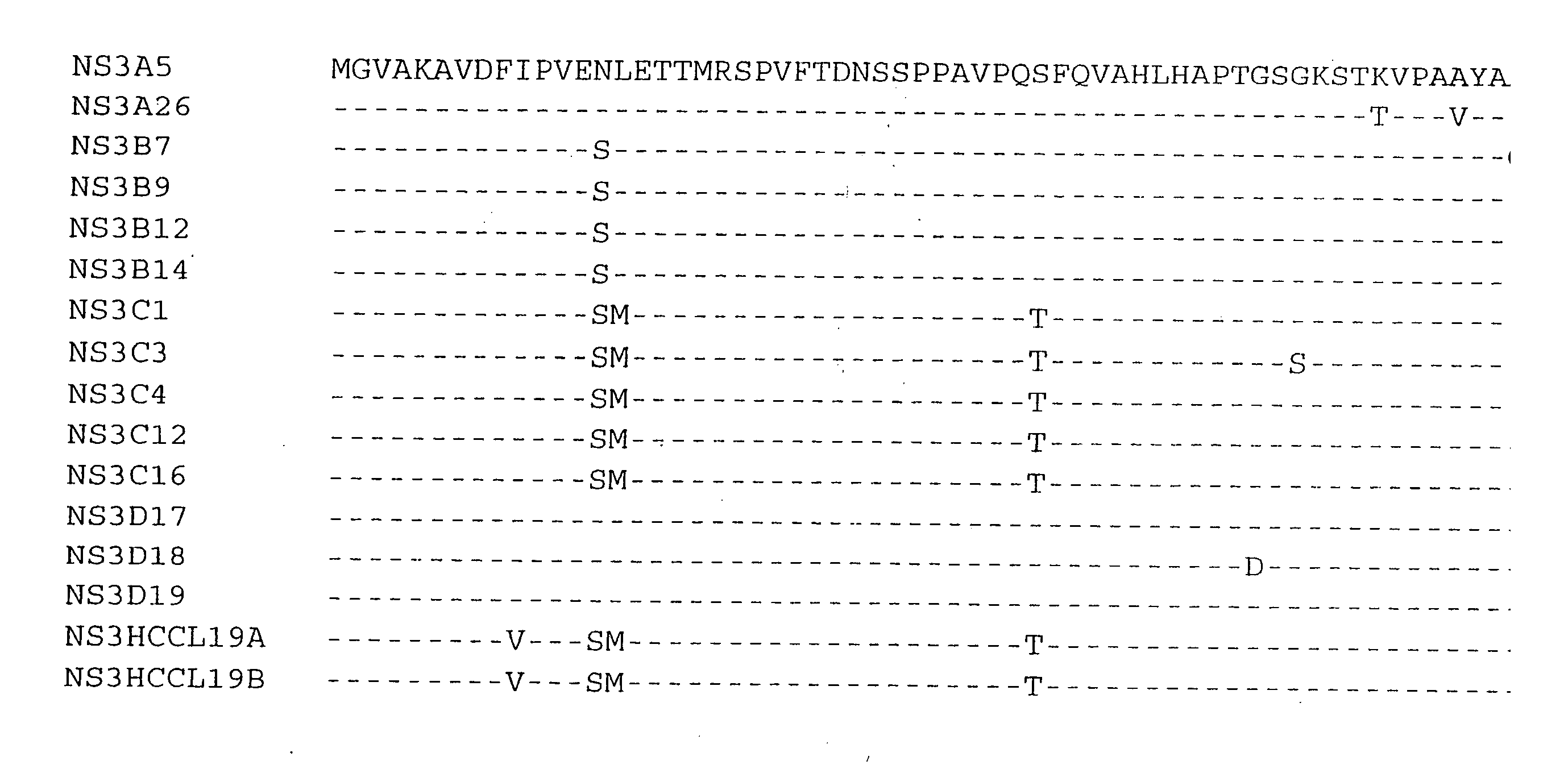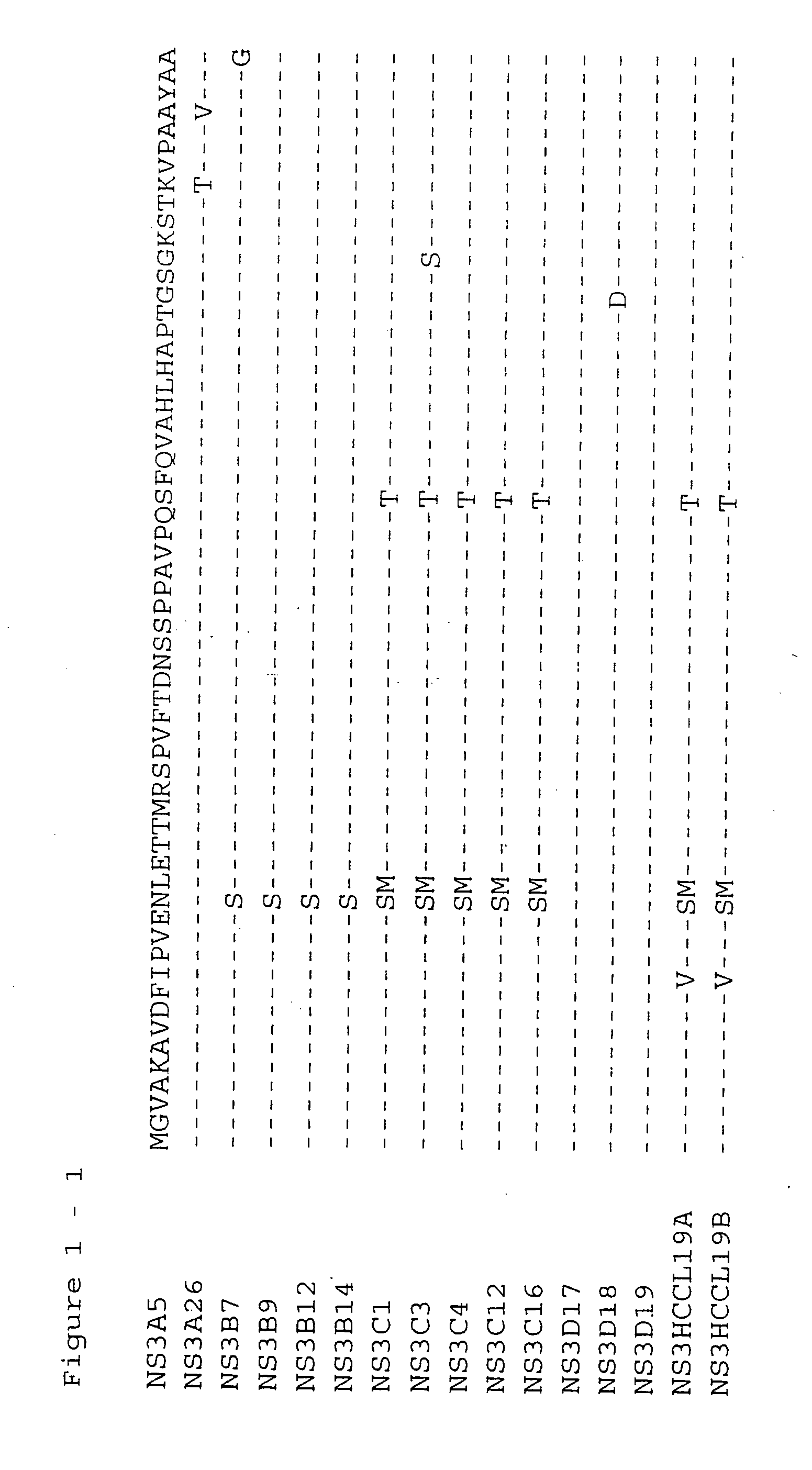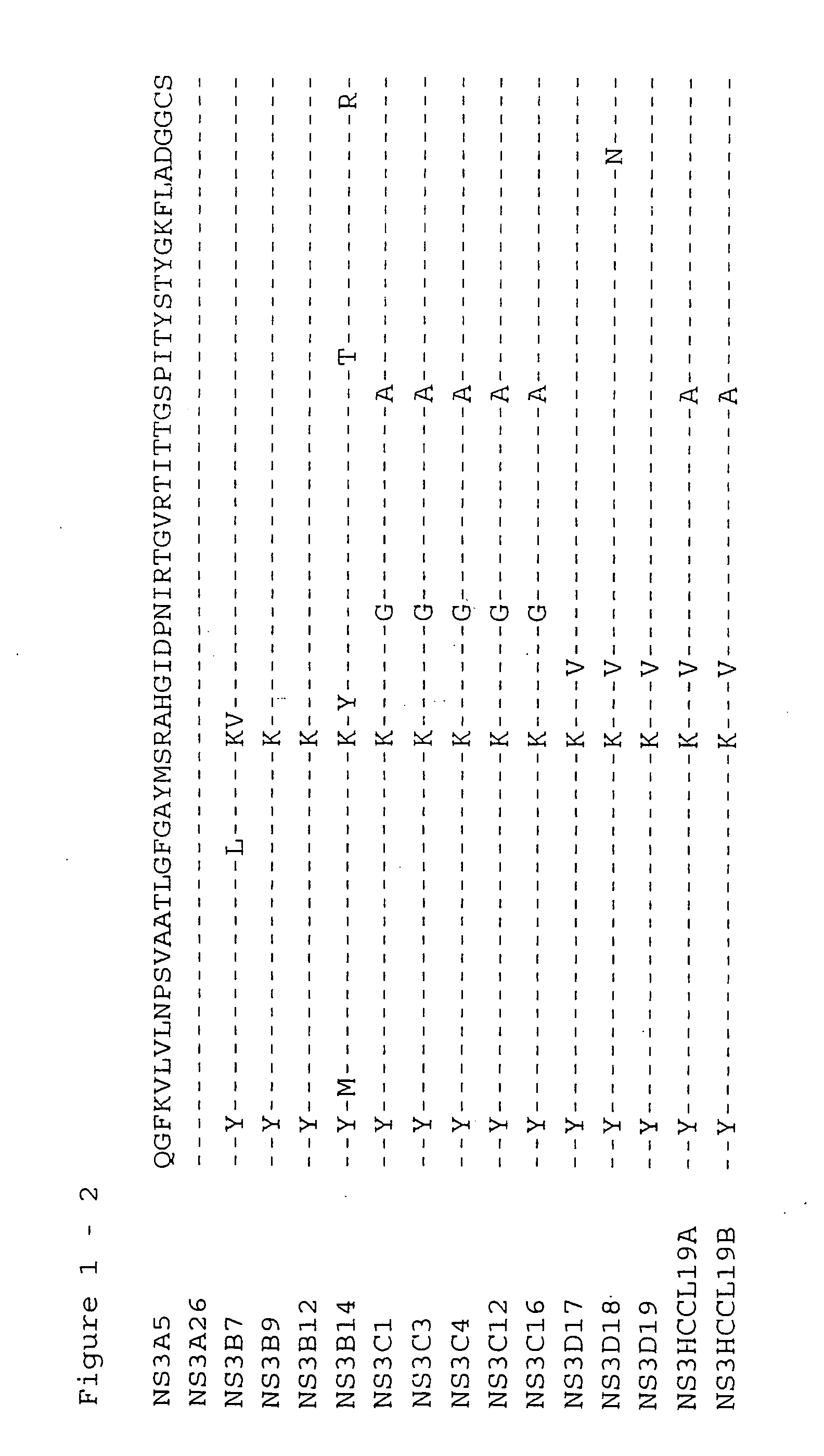Immunodiagnostic assays using reducing agents
a technology of immunoodiagnostic assay and reducing agent, which is applied in the field of diagnosis and treatment of hcv infection, can solve the problems of only being able to diagnose indirectly, the detection of hcv particles cannot be routinely performed, and the infection is chronic or active, so as to prevent or treat hcv infection
- Summary
- Abstract
- Description
- Claims
- Application Information
AI Technical Summary
Benefits of technology
Problems solved by technology
Method used
Image
Examples
example 1
Expression of HCV NS3 Type 1b Clone 19b in E. coli
1.1 Cloning of the HCV NS3 Type 1b Clones 19a and 19b Genes
[0136] The NS3 helicase domain (amino acids 1188-1465) was amplified by RT-PCR from HCV subtype 1b serum IG8309 (Innogenetics, Gnent, Belgium) using synthetic oligonucleotide primers HCPr59 (5′-GGGCCCCACCATGGGGGTTGCGAAGGCGGTGGACTT-3′) (SEQ ID NO 1) and HCPr60 (5′-CTATTAGCTGAAGTCGACTGTCTGGGTGACAGCA-3′) (SEQ ID NO 2). This yielded a PCR fragment 19 which was cloned into E. coli. The sense primer HCPr59 introduces an ApaI restriction site which includes an artifical methionine. Antisense oligonucleotide HCPr60 introduces a stopcodon after aa 1465. The PCR fragment was subsequently cut with ApaI and the resulting 833 bp ApaI fragment was cloned in the ApaI-cut expressionvector pmTNFHRP (Innogenetics, Ghent, Belgium). Four hepatitis C clones (HCCl) were sequenced: HCCl19a and HCCl19b (see deduced amino acid sequence given in FIG. 1 and FIG. 2-2). Clone HCCl19b (pmTNFHRPHCCl19b)...
example 2
Expression of HCV NS3 Clone B9 in E. coli
2.1 Cloning of the HCV NS3 Type 1a Clone B9 Gene
[0139] The NS3 helicase domain (amino-acids 1188-1465) was amplfied by RT-PCR from HCV subtype 1a serum IG21054 (Innogenetics, Ghent, Belgium) using synthetic oligonucleotide primers HCPr59 (5′-GGGCCCCACCATGGGGGTTGCGAAGGCGGTGGACTT-3′) (SEQ ID NO 1) and HCPr60 (5′-CTATTAGCTGAAAGTCGACTGTCTGGGTGACAGCA-3′) (SEQ ID NO 2). This yielded a PCR fragment B which was cloned into E. coli. The sense primer HCPr59 introduces an ApaI restriction site which includes an artifical methionine. Antisense oligonucleotide HCPr60 introduces a stopcodon after aa 1465. The PCR fragment was subsequently cloned in the pGEM-T vector (Promega, Madison, Wis., US). Four clones were sequenced: B7, B9, B 12, and B 14 (see deduced amino acid sequences in FIG. 1 and FIG. 3-2). Clone B9 (pGEMTNS3B9) was retained for further subcloning.
2.2 Construction of the Expressionplasmid pIGFH111NS3B9
[0140] Starting from vector pGEMTNS3...
example 3
Expression of HCV NS3 Type 1a Clones A26, C16, and D18 in E. coli
[0142] Clones A26, C16, and D18 were isolated from HCV subtype 1a infected sera IG21051, IG17790, and IG21068, respectively, in a similar way as described for clone B9 using primers HCPr59 and HCPr60. Initially, clones, A5, A26, C1, C3, C4, C12, C16, D17, D18, and D19, were cloned and sequenced (see deduced amino acid sequences given in FIG. 1). Clones A26, C16, and D18 were retained for further subcloning.
PUM
| Property | Measurement | Unit |
|---|---|---|
| Molar density | aaaaa | aaaaa |
| Molar density | aaaaa | aaaaa |
| Vickers hardness | aaaaa | aaaaa |
Abstract
Description
Claims
Application Information
 Login to View More
Login to View More - R&D
- Intellectual Property
- Life Sciences
- Materials
- Tech Scout
- Unparalleled Data Quality
- Higher Quality Content
- 60% Fewer Hallucinations
Browse by: Latest US Patents, China's latest patents, Technical Efficacy Thesaurus, Application Domain, Technology Topic, Popular Technical Reports.
© 2025 PatSnap. All rights reserved.Legal|Privacy policy|Modern Slavery Act Transparency Statement|Sitemap|About US| Contact US: help@patsnap.com



